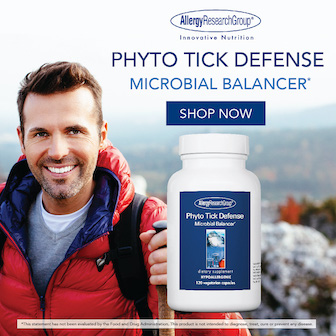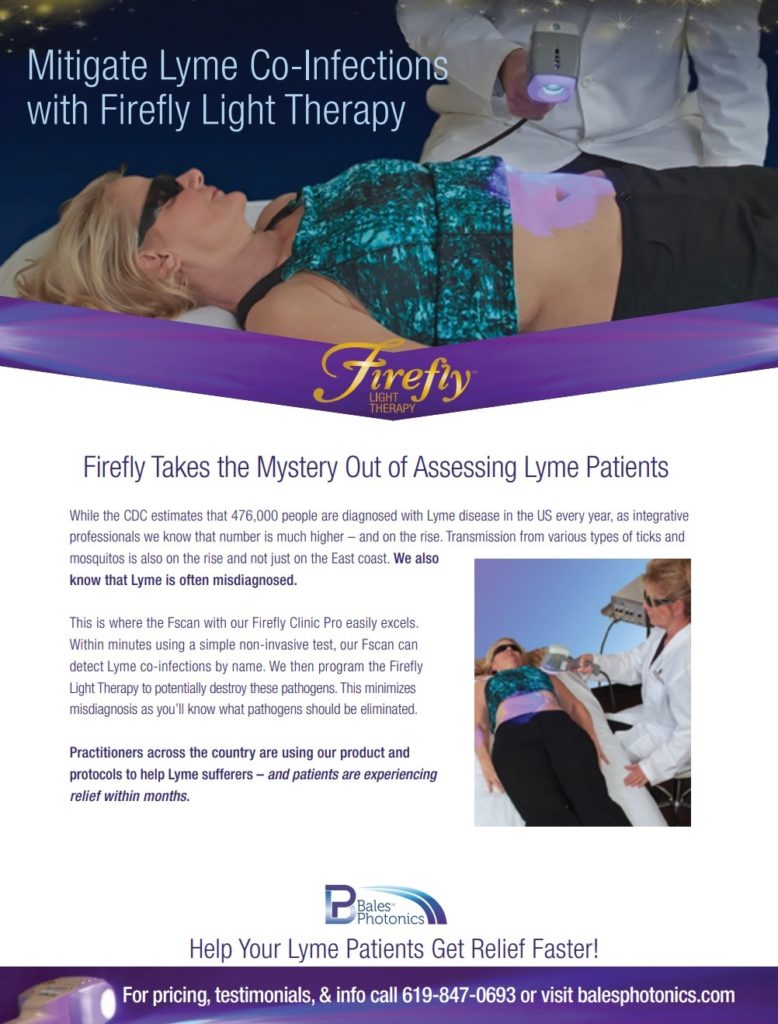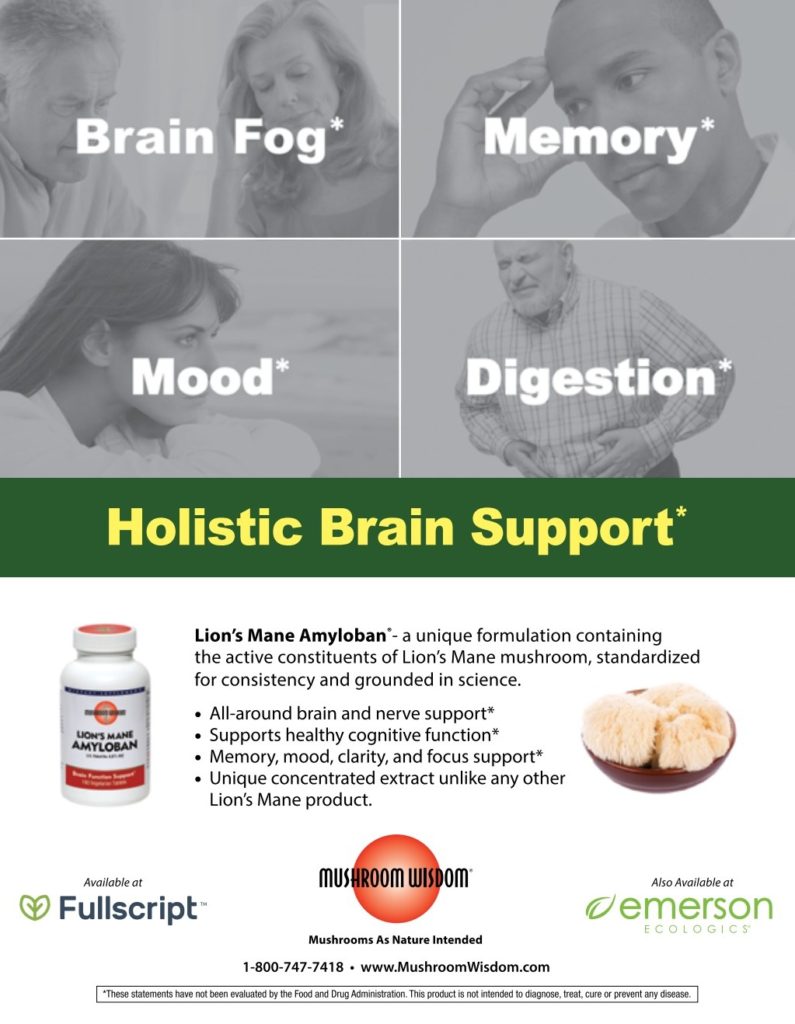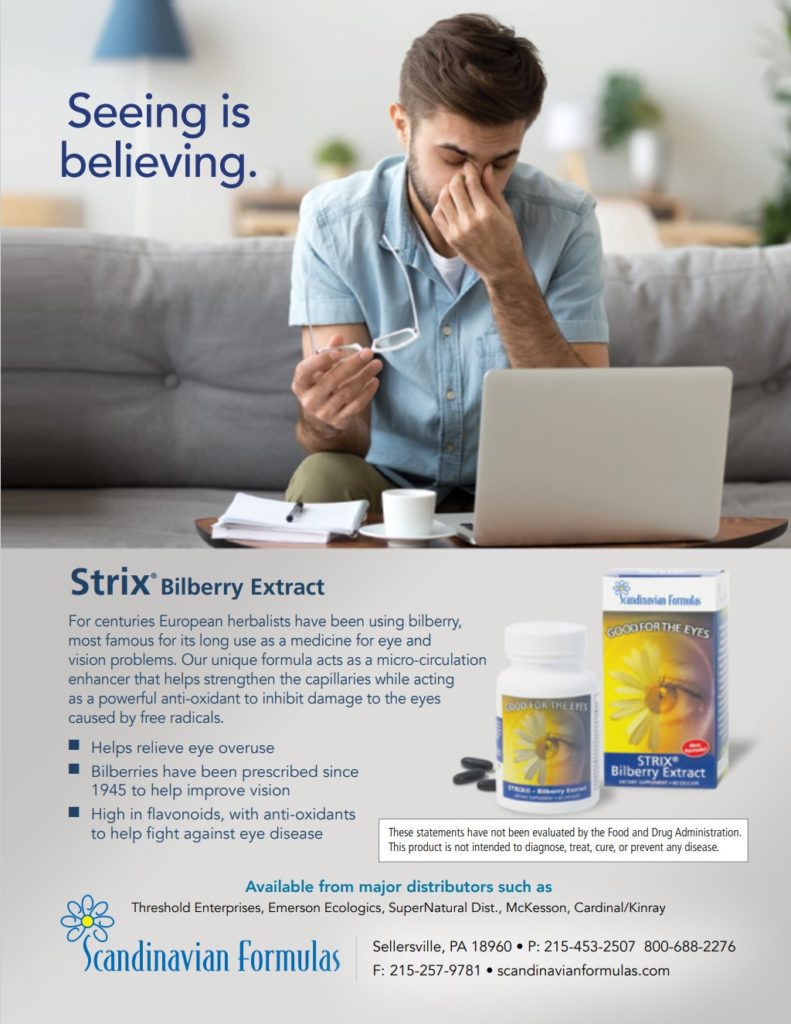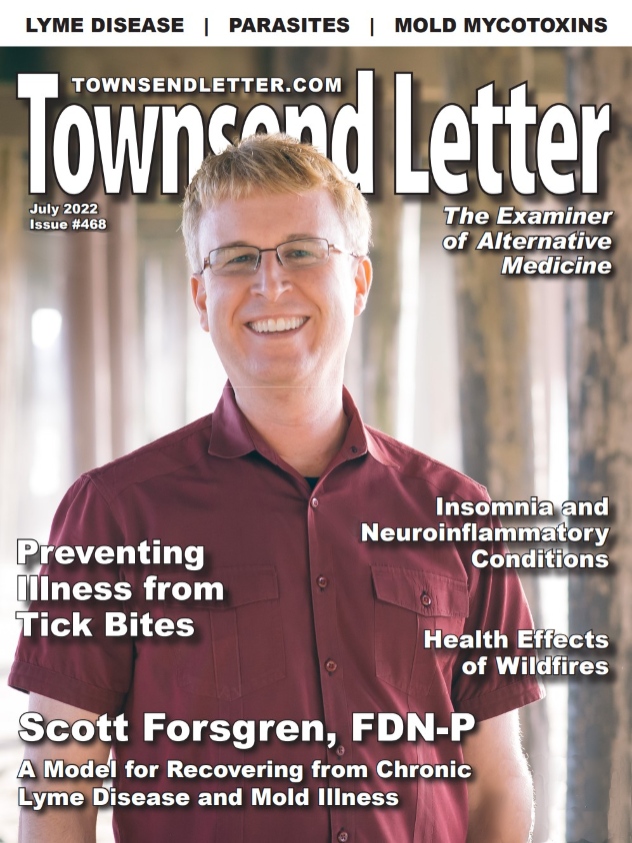by Jacob Schor, ND, FABNO
A June 2021 New York Times article surprised me when it quoted Matthew Ayres, a biology professor at Dartmouth, who explained that because there was an abundance of acorns in the fall of 2020, there would be a sharp increase in ticks and Lyme infections in 2021. “The rodents that eat acorns (e.g., white-footed mice, chipmunks, and gray squirrels) have been celebrating by making lots more rodents. These rodents are ideal hosts for the ticks that carry Borrelia, the bacterium that causes Lyme disease. So, more acorns = more rodents = more ticks = more tick-human encounters, and more exposure of humans to tick-borne diseases.”1
His equation seems obvious in retrospect but left me feeling dumb. I’ve spent many days wandering through our forest planting acorns, hoping to create an abundance of oak trees on our land, believing, ‘I was doing a good thing.’ My short-lived career as an acorn farmer was inspired by reading the book, The Nature of Oaks, by Douglas Tallamy, an entomology professor. Tallamy writes that oaks, more than any other tree, support life in the forest serving as the direct or indirect food source for multiple species of caterpillars, birds, squirrels, and other animals. Oak trees are the foundation of the forest food chain.
The idea that there is a positive association between acorn production and Lyme disease incidence via intermediary animal vectors was first published in PLOS Biology in 2006 in an article by Rick Ostfeld et al.2 Ostfeld’s theory got a lot of attention in 2017 because 2015 had been a mast year for oaks. Mast years are one of those strange and peculiar phenomena in nature that we don’t understand and that we can only observe and contemplate with wonder. Every so often oak trees collectively, as a species, decide to produce a superabundance of acorns. When this occurs, it is called a mast year. It’s not that one or two oak trees make an above average number of acorns, but all oak trees make a superabundance. No one understands what triggers this super overproduction or how it is coordinated between all trees, it just happens. Mast years might argue that there is some shared conduit of information and communication among the entire species, a kind of oak-telepathy. In response to a mast year the population of animals that feed on acorns surge dramatically for a few years only to drop off during the lean years that follow. More acorns, more small furry animals, more ticks, more Borrelia. This equation was cleverly confirmed in 2016 by two Polish researchers, who were able to positively associate the number of Google searches for information related to ticks and Lyme with the occurrence of mast years in the European Union.3
One might think that all of this suggests we should reduce oak trees to cut down on Lyme disease. Yet, Ostfeld and other tick ecologists suggest that we might be better off taking the opposite approach, leaving large stands of forest intact. The real problem they say is that residential areas have left forested lands too fragmented to support the wide range of species that typically might prey on the critters that host ticks and so buffer the impact of fluctuating acorn supplies. As we cut down forests, we lose predators that normally would limit deer, chipmunks, mice populations and other intermediary tick hosts and indirectly but most importantly, reduce ticks.4 Without the owls, hawks, foxes and coyotes to eat the mice, acting as controls to population growth, it takes only a few extra acorns for rodent populations to shoot up.
Biology tends to be both messy and complicated. Few things are as simple as they seem at first glance. Nothing about the Ayres’ acorn and Lyme association really tells us what will happen in the long run. We don’t have the data to know. We know one small piece of the puzzle and are trying to extrapolate from there to reach the right conclusion about how we might influence Lyme disease incidence.
We face similar puzzles in our practices. We want to make the right decision but often are missing necessary information. I’m thinking in particular of the question as to whether women with a history of breast cancer can mix tamoxifen and curcumin. There are plenty of reasons why most practitioners consider curcumin potentially helpful, yet a Dutch paper has laid out an argument suggesting that curcumin should be contraindicated for these women and many of our patients will be advised by their medical doctors that this is dangerous.
In the Spring of 2019, a paper was published by Hussaarts et al on the effects of both curcumin and piperine on women taking tamoxifen. Recall that tamoxifen is just a prodrug that has little pharmacologic effect until it is metabolized in the body into its active metabolite called endoxifen. Hussaarts and colleagues investigated whether these two nutritional supplements affect this metabolic activation, initially thinking that curcumin might increase endoxifen levels but discovering it may have the opposite effect.
Tamoxifen, or rather endoxifen, acts as a selective estrogen receptor modulator (SERM) against estrogen sensitive (ER+) breast cancer and has been used extensively since it was approved by the FDA in 1977.5 With 20-30% of all cancer patients, including breast cancer patients, using dietary products, there is understandably considerable interest as to whether these supplements help (our belief) or hurt (what many oncologists believe).6 Curcumin, an extract from the roots of Curcuma longa (aka turmeric), has become quite popular in this patient population and has been the subject of extensive research.7 Because of curcumin’s poor bioavailability it was often combined with piperine (from black pepper), a practice promised to increase availability by as much as 2000% by inhibiting curcumin’s glucuronidation.8
Metabolism of tamoxifen is complex and involves several cytochrome P450 pathways particularly CYP2D6 and CYP3A4. A few years back a lot of attention went to genotyping and phenotyping the CYP2D6 enzymes in ER+ breast cancer patients and categorizing how effectively they metabolized tamoxifen. The excitement about categorizing patients by the speed of their metabolic pathways has died down, and attention is shifting to measuring blood endoxifen levels as predicting levels is inaccurate.9
In rats given both curcumin and tamoxifen, tamoxifen plasma levels go up 33-64% presumably because the liver enzymes that would normally convert tamoxifen to endoxifen are inhibited.10 At the same time phase II drug metabolism pathways that eliminate endoxifen slow down. Predicting the net result of combining tamoxifen and curcumin is hard in rats and even more so in patients.11 Thus, the results from Hussaarts’ study ought to be important.
Their trial was a two-arm, three-period, randomized, cross-over study performed between January 2017 and May 2018 at the Erasmus University Medical Center in the Netherlands. The study participants were all women with a history of ER+ breast cancer. The patients took 20 to 30 mg of tamoxifen a day with or without curcumin, and with or without additional piperine. The curcumin dose was generous (3600 mg per day) and the piperine dose was equally high (30 mg per day). The primary outcome measured was the area under the curve (AUC) for serum endoxifen levels. When tamoxifen and curcumin were taken together, this endoxifen AUC trended lower, dropping a non-significant 7.7% compared to when tamoxifen was taken alone (95%CI: -15.4 to 0.7%; p = 0.07). The combination of curcumin and piperine had a greater impact, reaching statistical significance and lowering AUC by 12.4% (95%CI: -21.9 to -1.9%; p = 0.02).
Results were also examined by CYP2D6 phenotypes. The combination of dietary supplements and tamoxifen in those patients with what is termed an extensive metabolism (EM) phenotype showed even more pronounced effect. The authors suggest that, “… co-treatment with curcumin could lower endoxifen concentrations below the threshold for efficacy (potentially 20⁻40% of the patients), especially in EM patients.”2
This is a rather strong statement given that the impact on endoxifen from curcumin alone was not statistically significant. Granted with piperine the combination lowered endoxifen by about 12% but does anyone still use piperine to enhance curcumin absorption? We stopped selling the combination a long time ago, back when the nanoparticle curcumin came on the market. This study leaves us with questions. Does a 12% decrease in endoxifen really make that big a difference? What exactly is too low an endoxifen level?
There have been various suggestions as to what the therapeutic threshold for endoxifen is. Several publications suggest a level of >5.9 ng/mL (15.8 nM).13 A 2017 paper, by de Vries et al, reported that patients with endoxifen levels above 5.97 ng/mL had a better disease prognosis with a 26% lower recurrence rate than women with endoxifen concentrations below this.14 However, a 2020 paper by Sanchez-Spitman et al was uncertain about these suggested levels and after carefully reviewing past publications found lower doses suggested in some papers (5.9 ng/ml, 5.2 ng/ml and 3.3 ng/ml). Analyzing outcome data from 667 patients by endoxifen levels, Sanchez-Spitman’s team were unable to show that any of these levels changed relapse free survival when compared to women who quit taking tamoxifen altogether.15 So, while the current suggestion may be to monitor tamoxifen therapy based on endoxifen levels, the correct target level may be uncertain.
Of the women participating in Hussaarts’ curcumin study all but one seem to have maintained endoxifen levels >20 nM, only one of the sixteen had levels in the 10-20 nM range. So even with the AUC reduction, endoxifen levels were still probably in the therapeutic range.16
If curcumin was effective at lowering endoxifen levels, one would think it would also decrease side effects in these patients, most notably hot flashes. A 2020 Iranian randomized controlled trial giving curcumin reports that it lowered hot flash frequency significantly by 10.7%.17 These women were not taking tamoxifen so seeing a reduction of hot flashes in women taking tamoxifen with curcumin might not tell us that curcumin is interfering with tamoxifen’s clinical efficacy. To add to the confusion, among Hussarts’ patients, more hot flashes were observed in the patients treated with curcumin (both with or without the piperine) compared to tamoxifen monotherapy.
We may start feeling pressure from medical doctors and pharmacists who will take Hussaarts’ findings as a contraindication for curcumin. Will they understand how nuanced this is?
At this point we can’t see the big picture. It’s kind of like the oak trees. Does curcumin’s potential for reducing tamoxifen’s benefit outweigh the benefits curcumin itself may provide this patient group? We need to remember why cancer patients are so eager to take curcumin. Curcumin exerts inhibitory effects on multiple cancer types. Curcumin can regulate cancer cell proliferation, invasion, angiogenesis and metastasis. These anticancer effects are attributed to curcumin impacting a wide range of cell signaling molecules that control multiple pathways that impede cancer. These chemical pathways include Wnt/β-catenin signaling, PI3K/Akt, JAK/STAT, p38 MAPKs, c-Jun N-terminal kinases, extracellular signal-regulated kinases, p 53 signaling, NF-ĸB inhibition, apoptotic signaling, downregulation of oncogenic miRNAs and promotion of tumor suppressive miRNAs, to name a few.18 Furthermore, curcumin hinders development of drug resistance to tamoxifen.19
Could these multiple benefits of curcumin outweigh a possible slight reduction in endoxifen levels? The thing is we don’t know what the final outcome will be. Honestly we don’t even know that curcumin really lowers endoxifen. We certainly don’t know what the bottom line will be on progression-free survival or more importantly overall survival if women take both tamoxifen and curcumin.
Curcumin suppresses growth, angiogenesis, invasion and metastasis of cancers through regulation of multiple molecular targets.
[1]. Conte A, Mahoney D. We Hate Ticks, Too. Here’s How to Protect Yourself and Prevent Bites. New York Times. 6/30/2021.
[2]. https://kilpatrick.eeb.ucsc.edu/wp-content/uploads/2015/03/Ostfeld-et-al-2006-PLos-Biology.pdf
[3]. Bogdziewicz M, Szymkowiak J. Oak acorn crop and Google search volume predict Lyme disease risk in temperate Europe. Basic and Applied Ecology 17 (2016): 300-307.
[4]. Schmidt KA, Ostfeld RS. Biodiversity and the Dilution Effect in Disease Ecology. Ecology, vol. 82, no. 3, 2001, pp. 609–619. JSTOR, www.jstor.org/stable/2680183. Accessed 30 July 2021
[5]. Lippman SM, Brown PH, Tamoxifen Prevention of Breast Cancer: an Instance of the Fingerpost, JNCI: Journal of the National Cancer Institute. November 3, 1999; 91 (21): 1809–1819.
[6]. Damery S, Gratus C, Grieve R, et al. The use of herbal medicines by people with cancer: a cross-sectional survey. Br J Cancer. 2011 Mar 15;104(6):927-33.
[7]. Sharma RA, Gescher AJ, Steward WP. Curcumin: The story so far. Eur. J. Cancer. 2005;41:1955–1968.
[8]. Shoba G, et al. Influence of piperine on the pharmacokinetics of curcumin in animals and human volunteers. Planta Med. 1998 May;64(4):353-6.
[9]. Binkhorst L, et al. Individualization of tamoxifen therapy: much more than just CYP2D6 genotyping. Cancer Treat Rev. 2015 Mar;41(3):289-99.
[10]. Cho YA, Lee W, Choi JS. Effects of curcumin on the pharmacokinetics of tamoxifen and its active metabolite, 4-hydroxytamoxifen, in rats: possible role of CYP3A4 and P-glycoprotein inhibition by curcumin. Pharmazie. 2012 Feb;67(2):124-30.
[11]. Antunes MV, et al. CYP3A4*22 is related to increased plasma levels of 4-hydroxytamoxifen and partially compensates for reduced CYP2D6 activation of tamoxifen. Pharmacogenomics. 2015;16(6):601-17.
[12]. Hussaarts KGAM, et al. Impact of Curcumin (with or without Piperine) on the Pharmacokinetics of Tamoxifen. Cancers (Basel). 2019 Mar 22;11(3):403.
[13]. Schroth W, et al. Improved Prediction of Endoxifen Metabolism by CYP2D6 Genotype in Breast Cancer Patients Treated with Tamoxifen. Front Pharmacol. 2017 Aug 24;8:582.
[14]. de Vries Schultink AH, et al. An Antiestrogenic Activity Score for tamoxifen and its metabolites is associated with breast cancer outcome. Breast Cancer Res Treat. 2017 Feb;161(3):567-574.
[15]. Sanchez-Spitman AB, et al. Exposure-response analysis of endoxifen serum concentrations in early-breast cancer. Cancer Chemother Pharmacol. 2020 Jun;85(6):1141-1152.
[16]. Madlensky L, et al. Tamoxifen metabolite concentrations, CYP2D6 genotype, and breast cancer outcomes. Clin Pharmacol Ther. 2011 May;89(5):718-25.
[17]. Ataei-Almanghadim K, et al. The effect of oral capsule of curcumin and vitamin E on the hot flashes and anxiety in postmenopausal women: A triple blind randomised controlled trial. Complement Ther Med. 2020 Jan;48:102267.
[18]. Wang M, et al. Potential Mechanisms of Action of Curcumin for Cancer Prevention: Focus on Cellular Signaling Pathways and miRNAs. Int J Biol Sci. 2019 May 7;15(6):1200-1214.
[19]. De Gasperi M, Cavazos D, deGraffenried L. Curcumin Modulates Tamoxifen Response in Resistant Breast Cancer Cells. Cancer Res. December 15 2009 (69) (24 Supplement) 3098;


